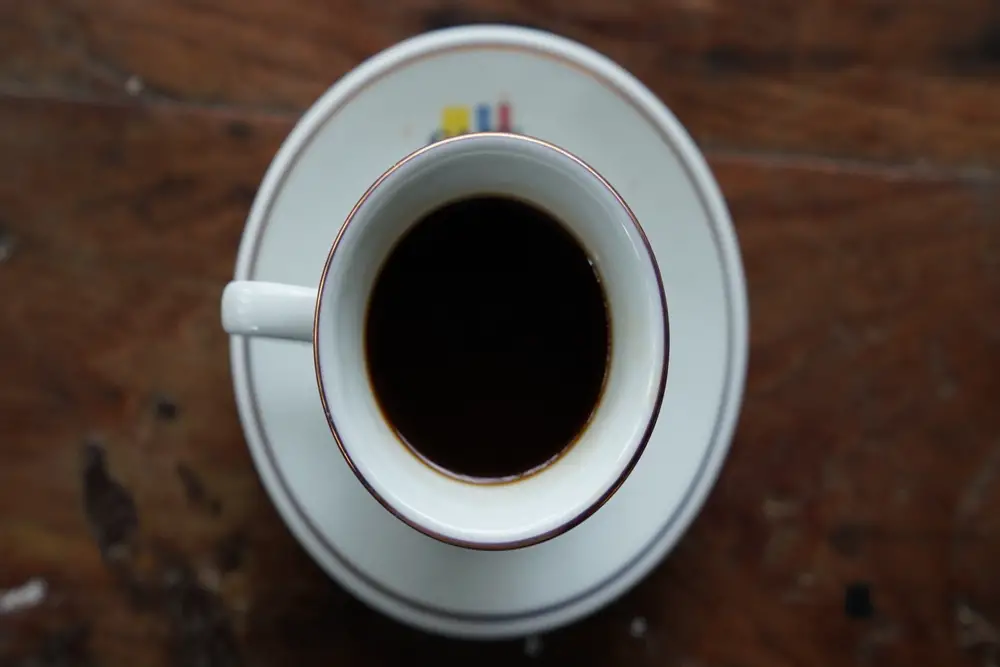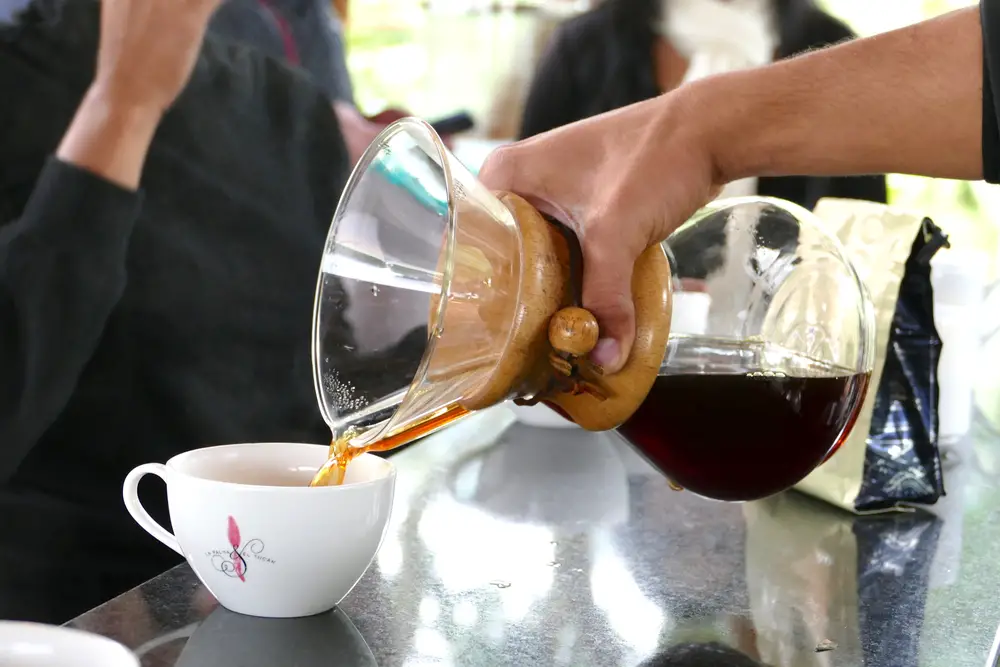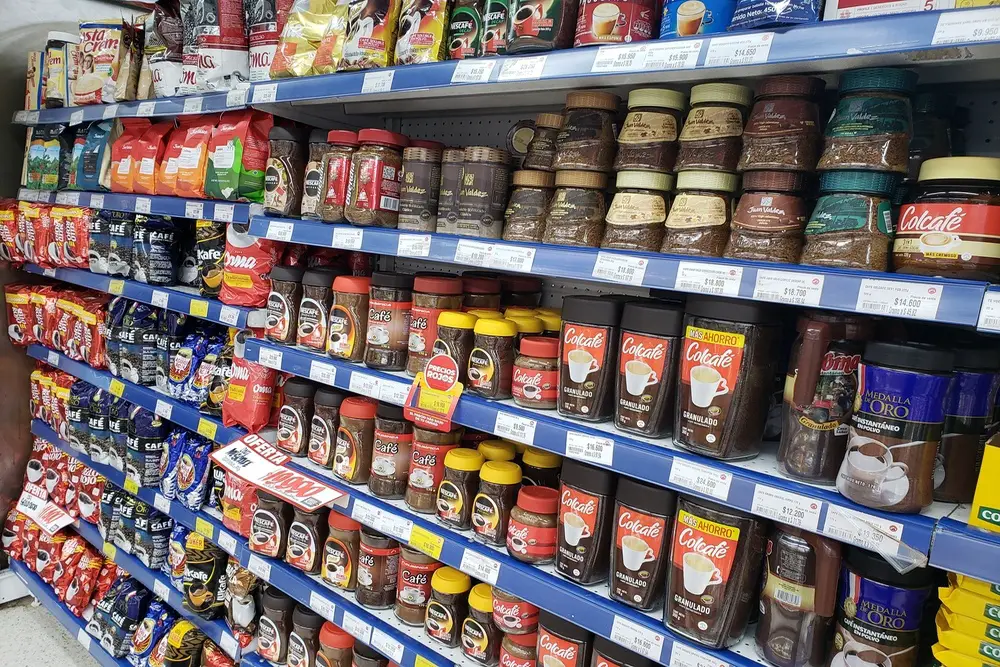If you’re a coffee lover, you’ve probably heard of the Arabica and Robusta varieties. But have you ever heard of Liberica coffee, the rarest of them all?
Table of Contents
General characteristics of Liberica coffee
The coffee Liberica is a species of tree in the Rubiaceae botanical family, also known as the coffee family.
This species is characterized by the size of the tree, which can reach up to 20 meters in height, making it difficult to grow and harvest compared to Arabica or Robusta coffee, which is harvested from smaller plants.
The fruit of this plant is then referred to as coffee Liberica. This type of coffee accounts for 1-2% of world consumption.
Although this species is native to African countries such as Liberia (where it gets its name from), Uganda and Angola, it is currently more popular on the Asian continent, particularly in countries such as the Philippines and Indonesia.
Origin of Liberica coffee
The first commercial mention of Liberica coffee dates back to the late 19th century. At that time, the Arabica variety of coffee was in decline due to an infestation of the Hemimelia fungus vastatrix in a difficult situation.
This fungus causes a disease known as coffee rust, characterized by the appearance of brown spots on the tree’s leaves.
Once the plant is infected with the fungus, it loses its leaves and is therefore unable to produce fruit, i.e. coffee beans.
In response to this situation, the Liberica coffee was transported from Africa to other parts of the world, particularly Southeast Asia. It was believed that this type of coffee was more resistant to pests and better adapted to the hot climate.
Also, Liberica coffee could grow at lower elevations than the other varieties, making it easier to grow.
However, the coffee rust epidemic was brought under control and Arabica coffee became the preferred variety for consumption, mainly because of its mild flavor and aroma.
After the Philippines gained independence at the end of World War II, the United States decided to embargo Liberica beans as it would lose its largest coffee producer. As a result, this variety could not compete with the local market. This situation made it very difficult to export this variety to the major coffee markets.
Later, in the 1950s, the embargo was lifted, but Arabica coffee production had already recovered and it was too late for Liberica coffee. Liberica coffee has a flavor that evokes both love and disgust. This coffee has a very strong flavor that makes it unique.
- Connoisseurs say they love the smoky flavor accompanied by floral notes and slightly spicy undertones.
- Critics say the flavor is very strong and dense, even invasive.
In fact, Liberica coffee is colloquially referred to as ” barako”, which means “male” or “masculine” in Tagalog. This is because it is mainly consumed by men.
Liberica coffee smell bad?
Liberica coffee is known for the scent that the beans give off as they roast. This smell is described as very strong and not necessarily pleasant, with some even saying the smell is similar to that of moldy cheese.
That’s odd, to say the least, because coffee is said to smell very similar to a fruit called durian, which is said to be the world’s worst-smelling fruit and is why it’s banned from being taken on planes.
When drinking coffee, the smell is more pleasant.
There are many differences between Liberica coffee, Robusta coffee and Arabica coffee.
However, we will mention some of the most important ones to make it easier for you to distinguish these 3 types of coffee.
| type of coffee | Arabica | robusta | Liberica |
| market share | 60% of world production | 38-39% of world production | 1-2% of world production |
| characteristics of the grains | Flat, oval and dark brown in color | Round, light brown, sometimes pale brown | The larger of the two is asymmetrical and teardrop shaped. |
| taste | The sweetest and mildest variety sweetness prevails | Strong, considered inferior For the preparation of instant coffee Mostly bitter | Very powerful, with higher acidity, floral notes and tart nuances, but more sweetness. |
| Caffeine per 100 gr ** | 1.61 g | 2.26 g | 1.23 g |
| Availability | plentiful | plentiful | Meager |
| Price*** | Depends on the brand | Depends on the brand | High |
| mounting height | 800 – 2100 meters above sea level | 500-1200 meters above sea level | 500 – 1500 meters above sea level |
| pest resistance | low-medium | Medium high | low-medium |
**Clearly, caffeine is a substance that prevents some pests, so it is believed that the higher the concentration of caffeine, the better the coffee works against pests.
*** The price of Arabica and Robusta coffee largely depends on the brand and variety; However, Liberica coffee is almost always expensive, regardless of the brand, as it is hard to come by outside of Asia.
Why is Liberica coffee so rare?
Unlike other types of coffee, such as Arabica or Robusta, harvesting Liberica coffee requires the use of mechanical equipment. Also, the workers have to spend more time on picking because they have to use ladders; this makes the whole process slower and more time consuming.
On the other hand, coffee farmers who choose to grow Liberica coffee usually pay more for the raw material, i.e. the trees, as these tend to have a deeper root system.
This makes them more expensive compared to other coffee tree species as they have access to deeper water. This is how the trees survive the coffee Liberica also harsher climatic conditions in which other species do not thrive.
Is the Liberica coffee on the brink of extinction?
Although Liberica coffee is very popular in the Philippines, Indonesia and Malaysia, many growers have decided to scale back cultivation to only meet domestic demand. Because Liberica coffee is not popular outside of the Asian continent and is usually only in demand by coffee lovers or connoisseurs.
However, this does not mean that the cultivation of this species will be stopped altogether, but rather that more and more growers are opting for hybrid cultivation. These hybrids result from the mating and subsequent generation of subspecies of the Liberica trees. These hybrid plants thus grow less tall than the original species and are therefore easier to harvest.
It is therefore likely that the hybrid variety of Liberica coffee will continue to be grown. However, the pure species is endangered for the following reasons, among others:
Climate change and deforestation
- Producers’ preference for growing the more popular coffee varieties (Arabica and Robusta).
- The decreasing interest of growers in growing the pure species.
Be noted that while these new hybrid species are easier to grow and harvest, they do not have the same flavor characteristics as the original species, leaving many experts confused as to what will become of this species.
Some are already claiming that the beans from these new Liberica species have a less strong flavor and are of inferior quality.
Currently, this coffee is only grown on a large scale in the Philippines, as pests have decimated healthy tree populations in other countries.
A new coffee rust pest
to attack crops of both pure and hybrid Liberica coffee. As such, there are concerns about the future of both natural and planted species.
In countries like the Philippines, the government has worked hand-in-hand with local growers to stop the spread of this pest and appears to have managed to reduce the number of infested specimens.
How do you enjoy a good Liberica coffee?
In general, Liberica coffee beans are heavily roasted and finely ground; those who know this variety say that it is best drunk the Filipino way. That means you drink the black coffee with a little Muscovado sugar (unrefined cane sugar with a caramel-like taste).



